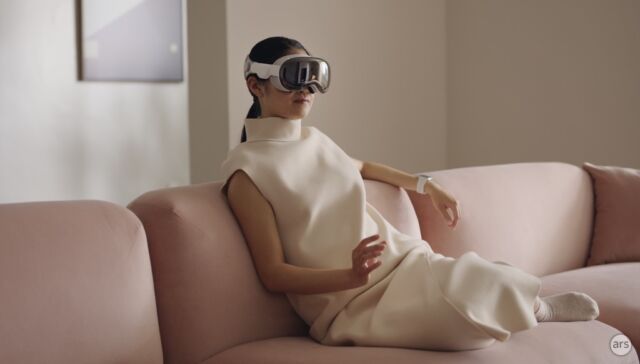
Don’t judge Vision Pro by the standards of VR
Comparing the Vision Pro to the current state of the art in virtual reality makes its value proposition seem like a real uphill climb for Apple. After all, for the same price as just one Vision Pro, you could buy three-and-a-half Quest Pro headsets (after the recent price drop to $999) or a full seven of Meta's upcoming Quest 3 headsets (one for every day of the week).
But while the Vision Pro looks a bit like existing VR headsets, this is first and foremost an augmented reality device (i.e., one that projects images on top of your natural view of the "real world"). That puts it in the same category as Microsoft's Hololens 2, which launched for developers at $3,500 in 2019, or the Magic Leap 2, which launched for $3,299 last year.
That difference matters for more than price-competitiveness reasons. The use cases for a true augmented reality device go way beyond those for a dedicated virtual reality device (which fully blocks your view of the real world). [Update: To be clear, the Vision Pro's display presents a live view of the real world as it senses it through its multiple cameras and sensors, with a claimed latency of just 12 ms. This is often referred to as "mixed reality" (MR) or "extended reality" (XR), but the use case is still more akin to AR devices that project images on top of your natural view of real-world scenes.]

To see how, note that the software market for VR headsets is currently dominated by games and other interactive experiences that usually have you stand in an all-encompassing virtual environment. Apple's presentation today, by contrast, barely mentioned gaming. Instead, it mainly showed Vision Pro users lounging on a couch and flicking through apps or movies or sitting at a keyboard and working on massive virtual displays (not to mention getting up to grab a drink from the fridge without taking the headset off—something that's tough in VR, even with high-quality passthrough cameras).
Those Vision Pro users were shown using casual gestures to wander through an iOS-style environment rather than using the kinds of big motions that characterize interactions in VR games. Vision Pro doesn't even come with handheld controllers, which could make it difficult to port existing VR games that rely on those controllers.
Whether Apple's device can live up to the vision presented by this carefully crafted presentation is an open question. But the product's focus highlights just how different this AR headset could be from previous VR headsets—if Apple can get it right.
Promoted Comments